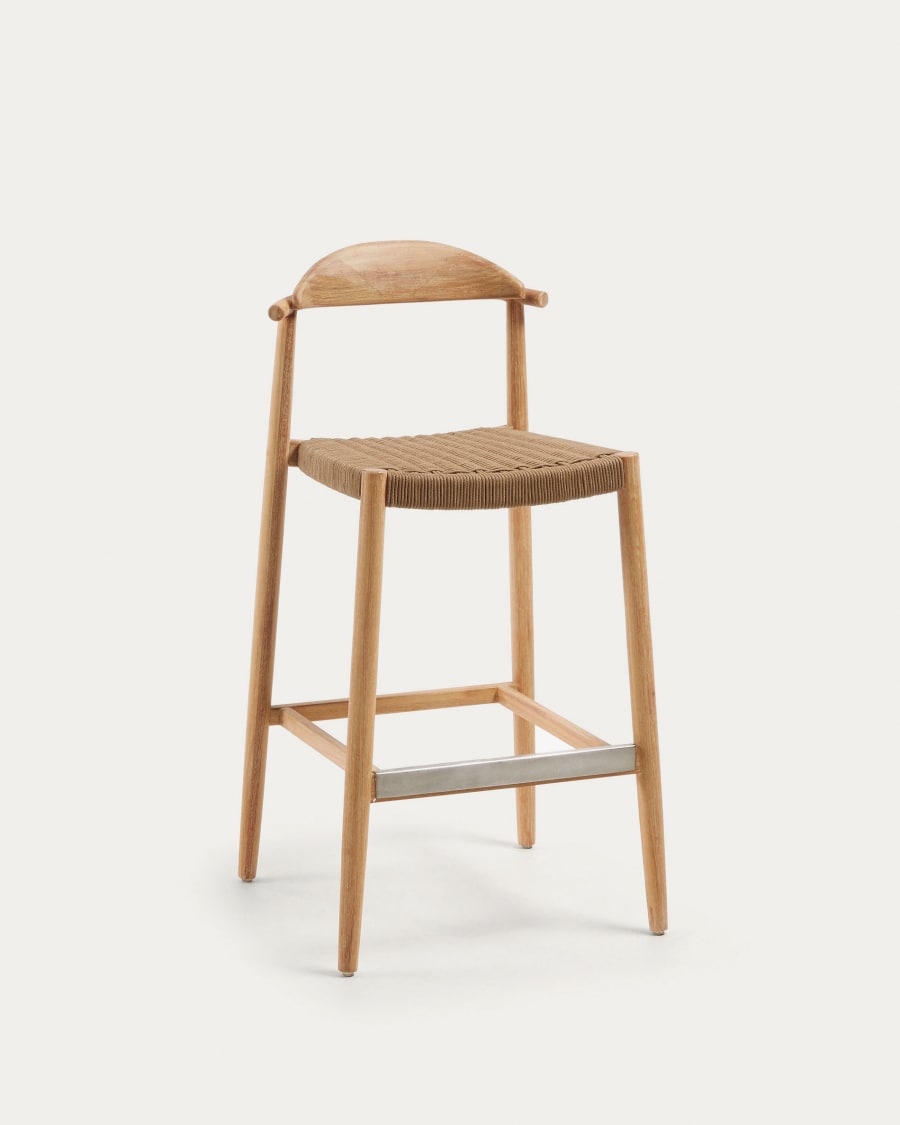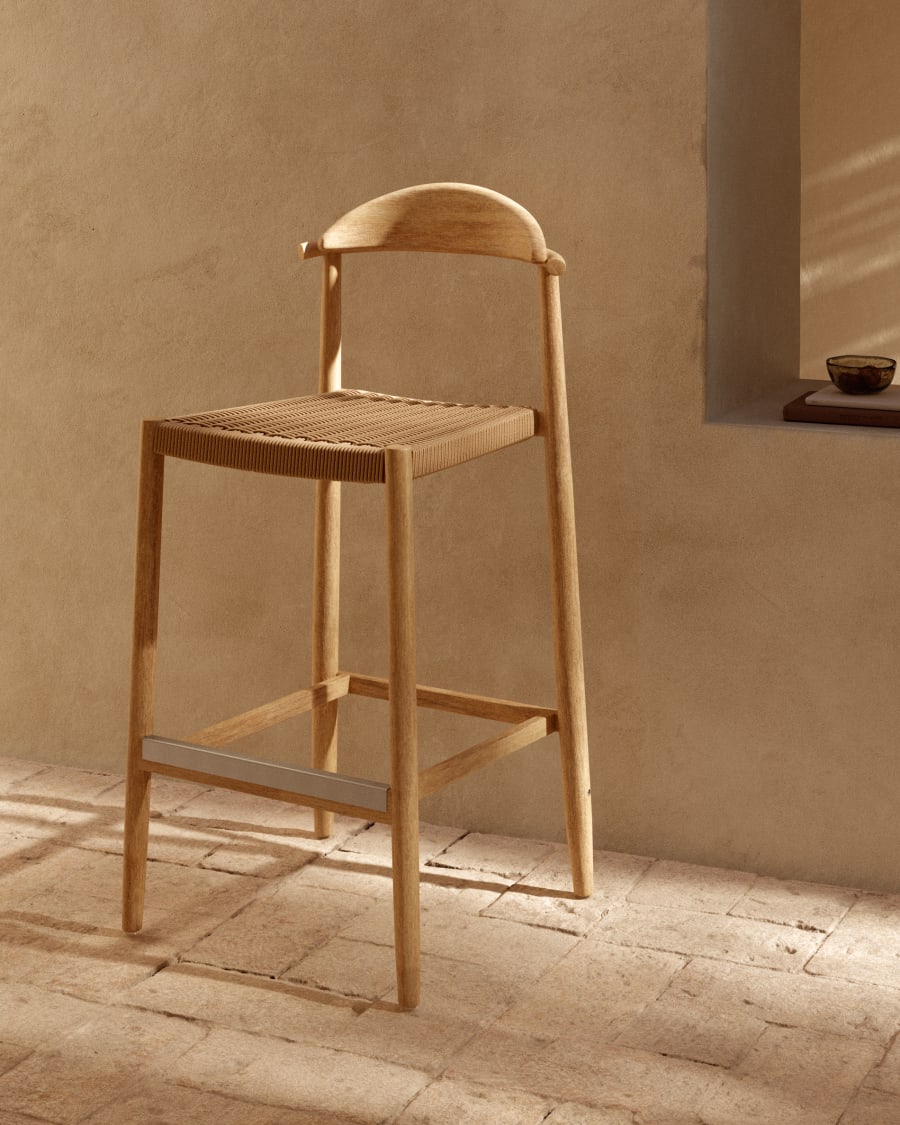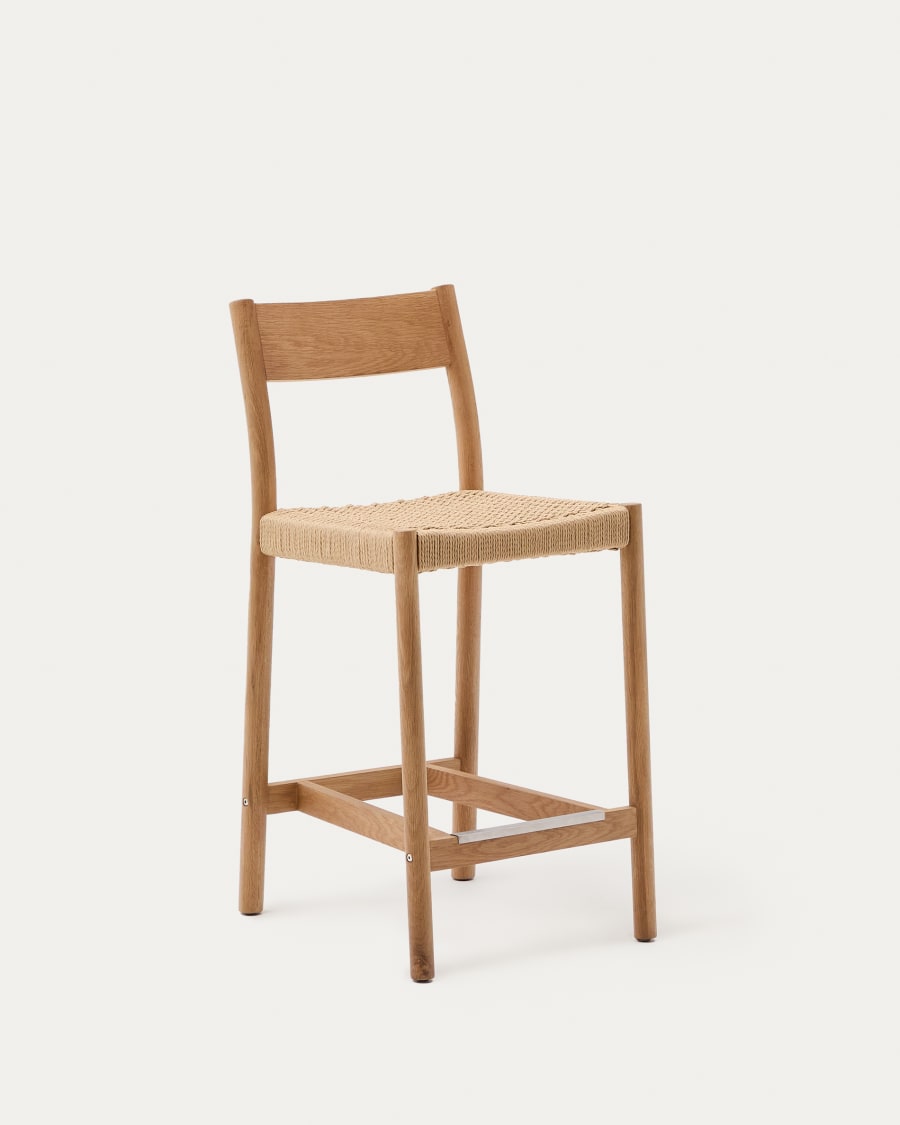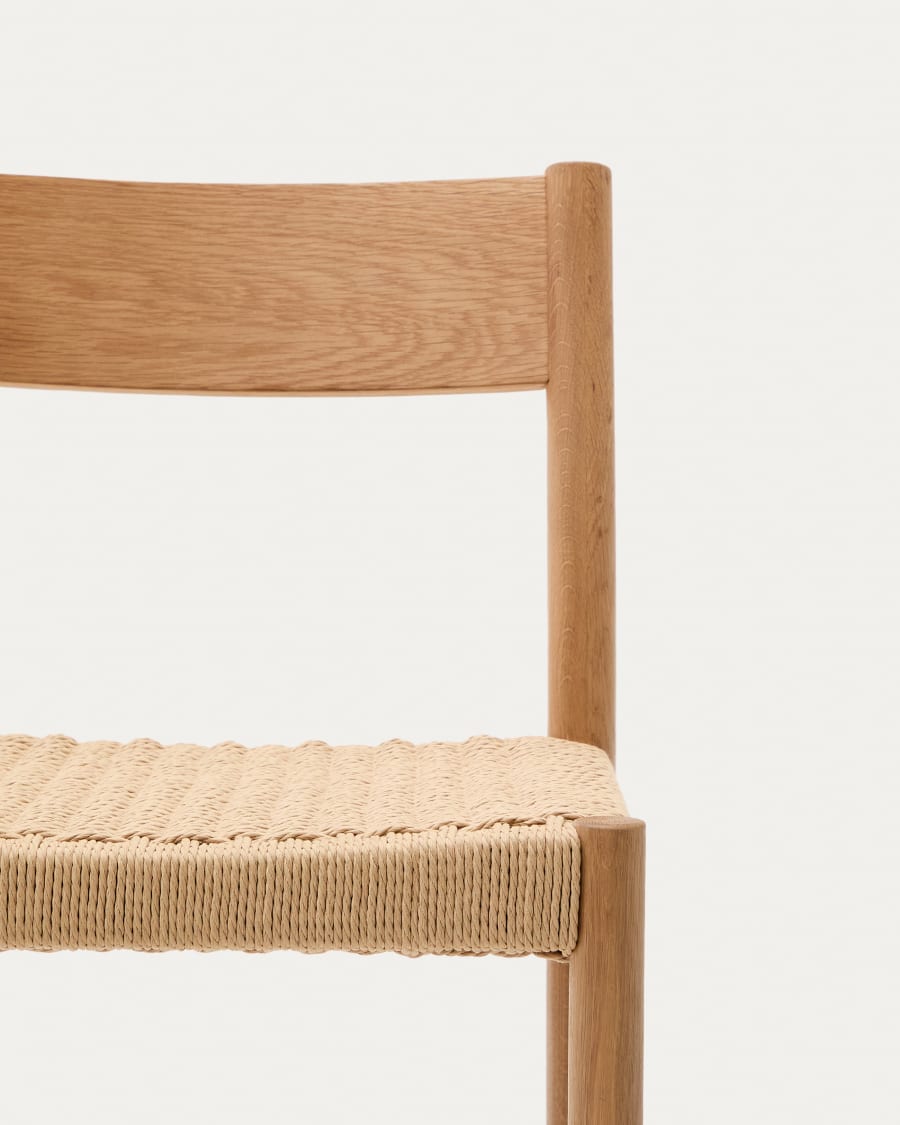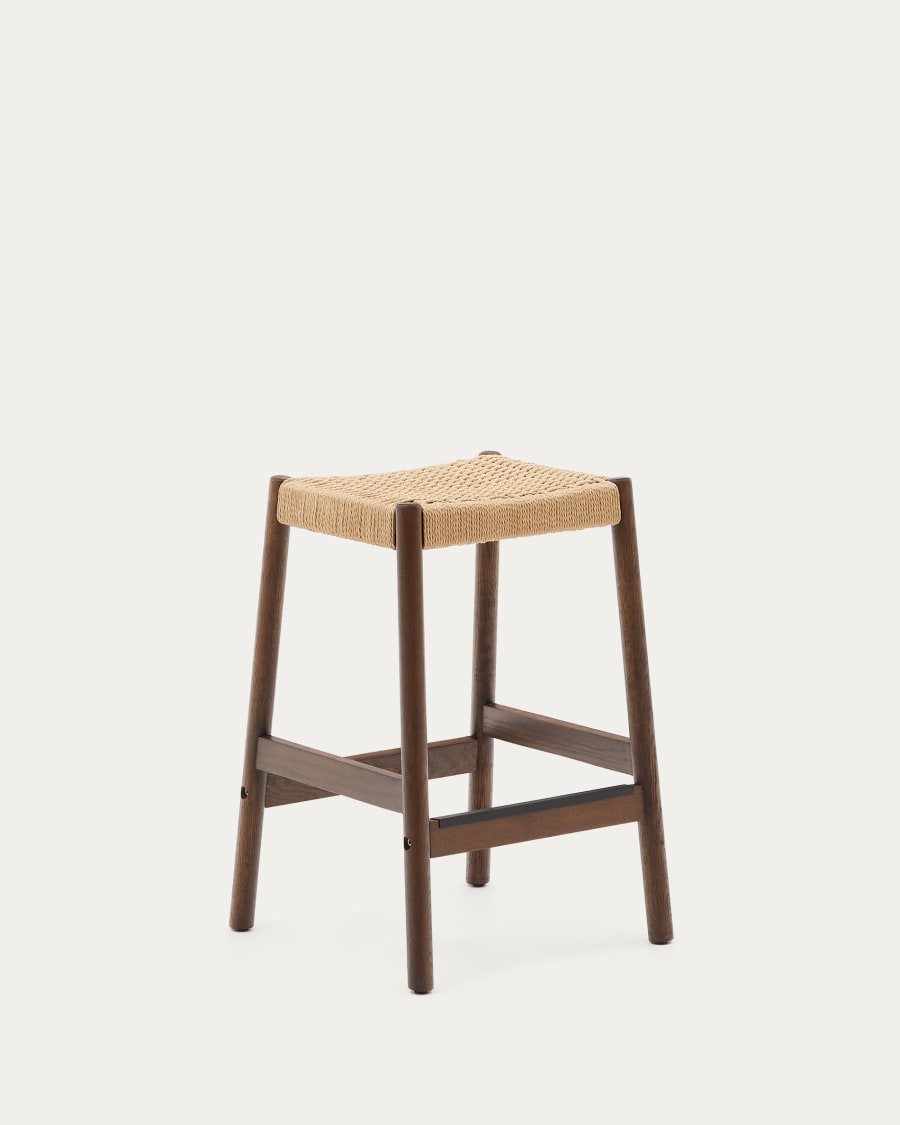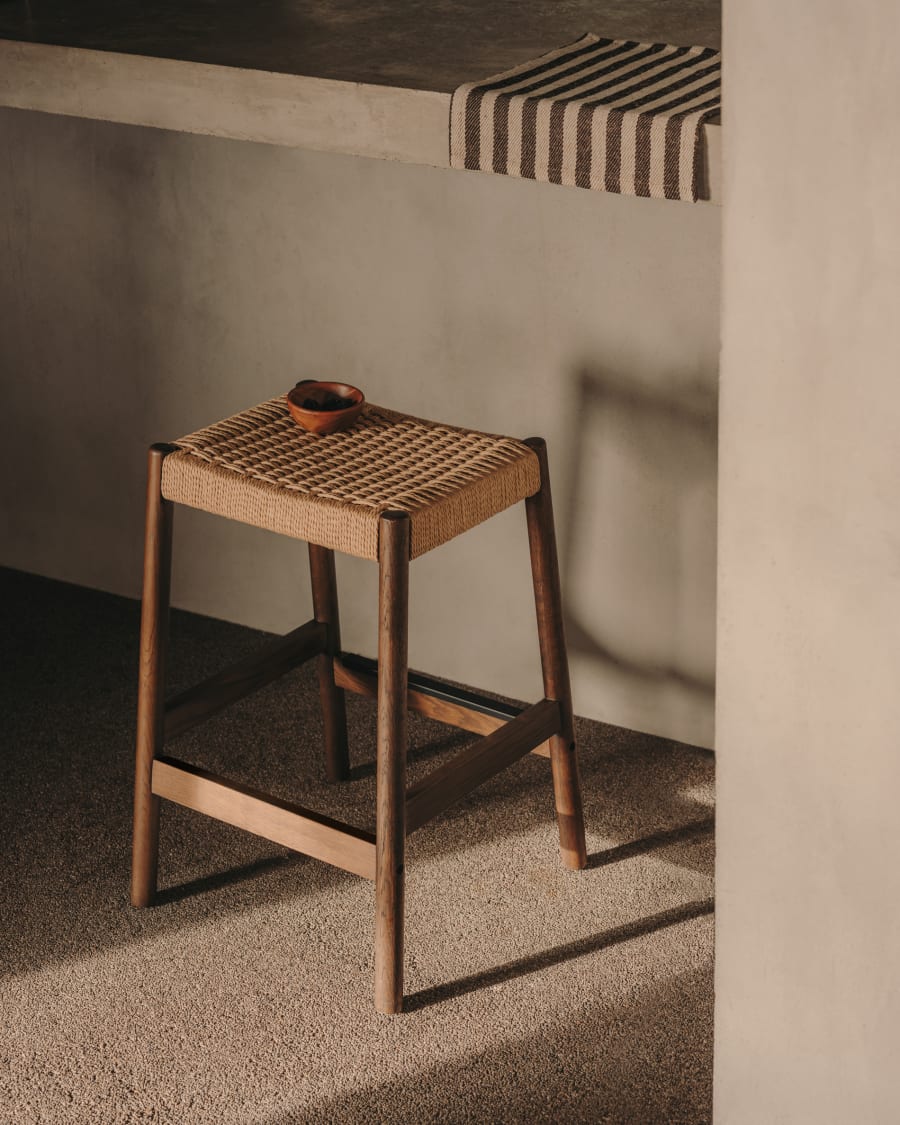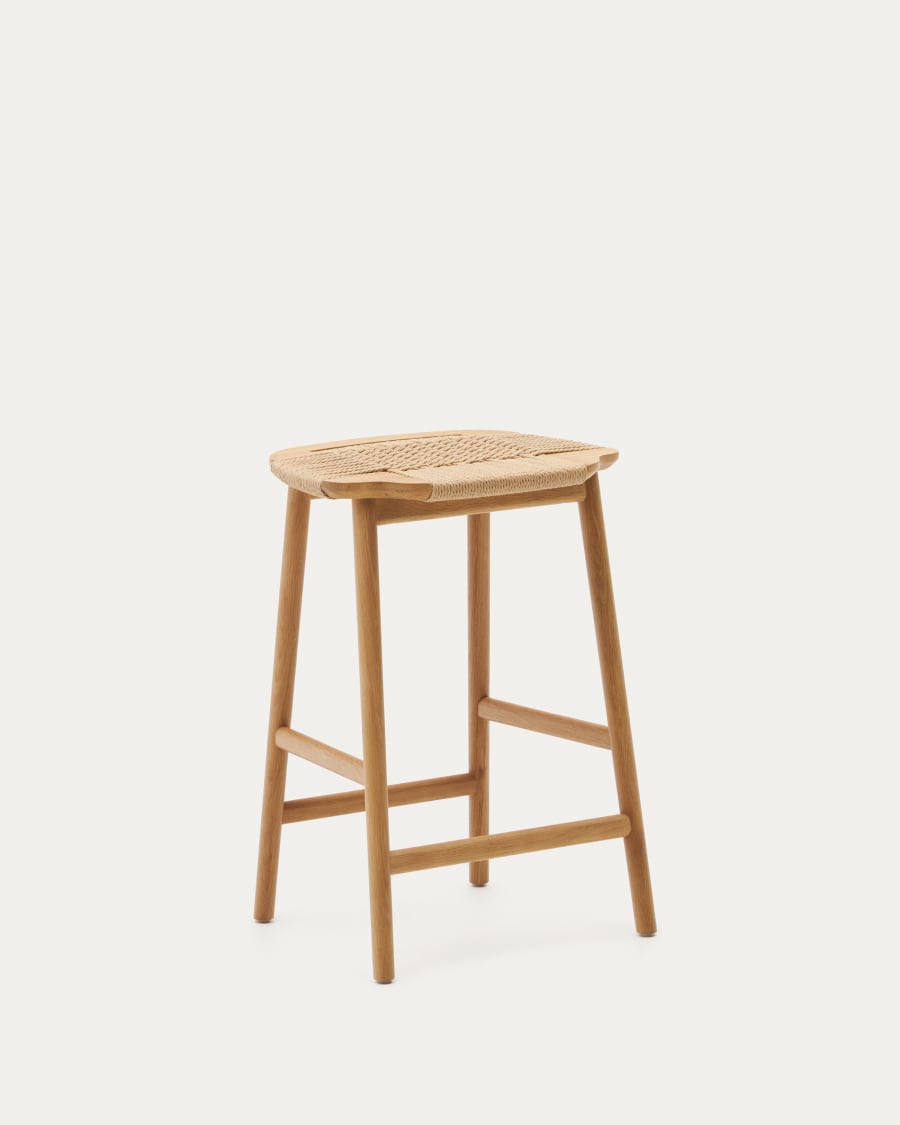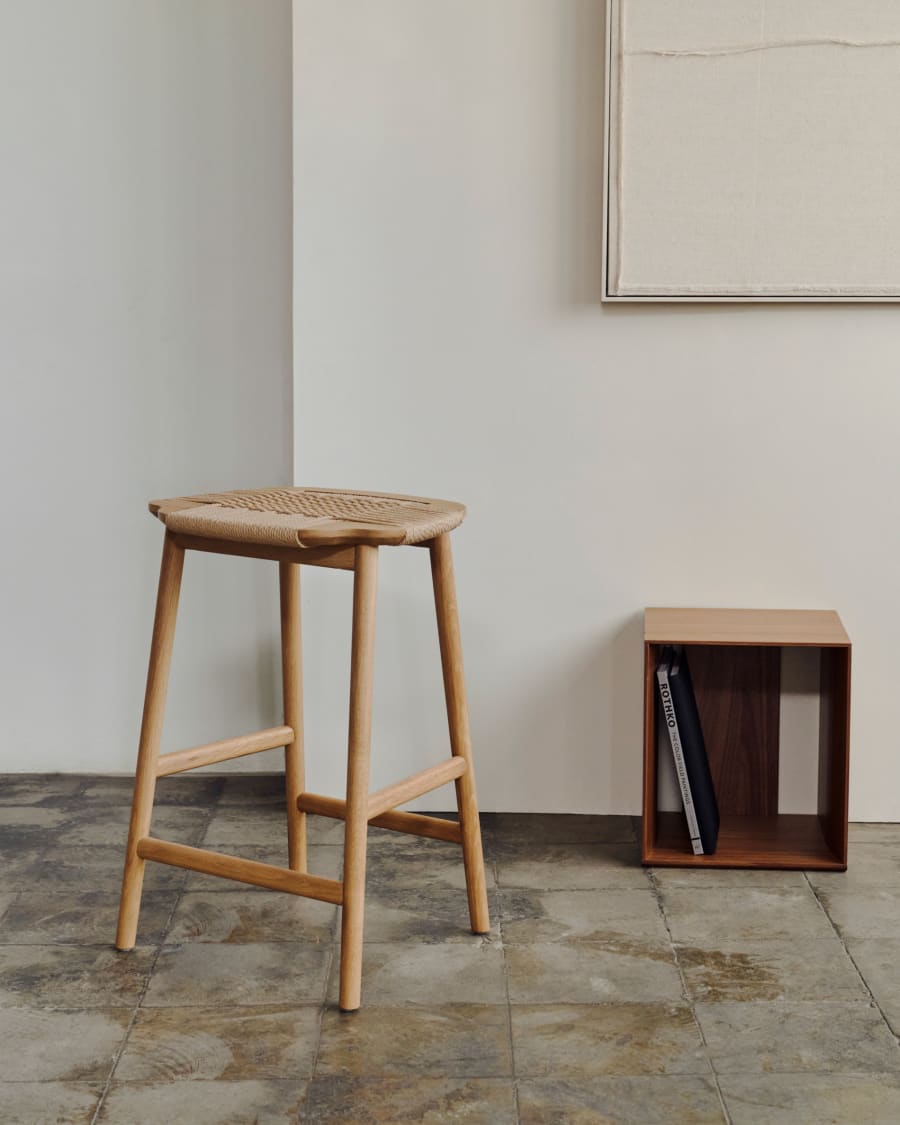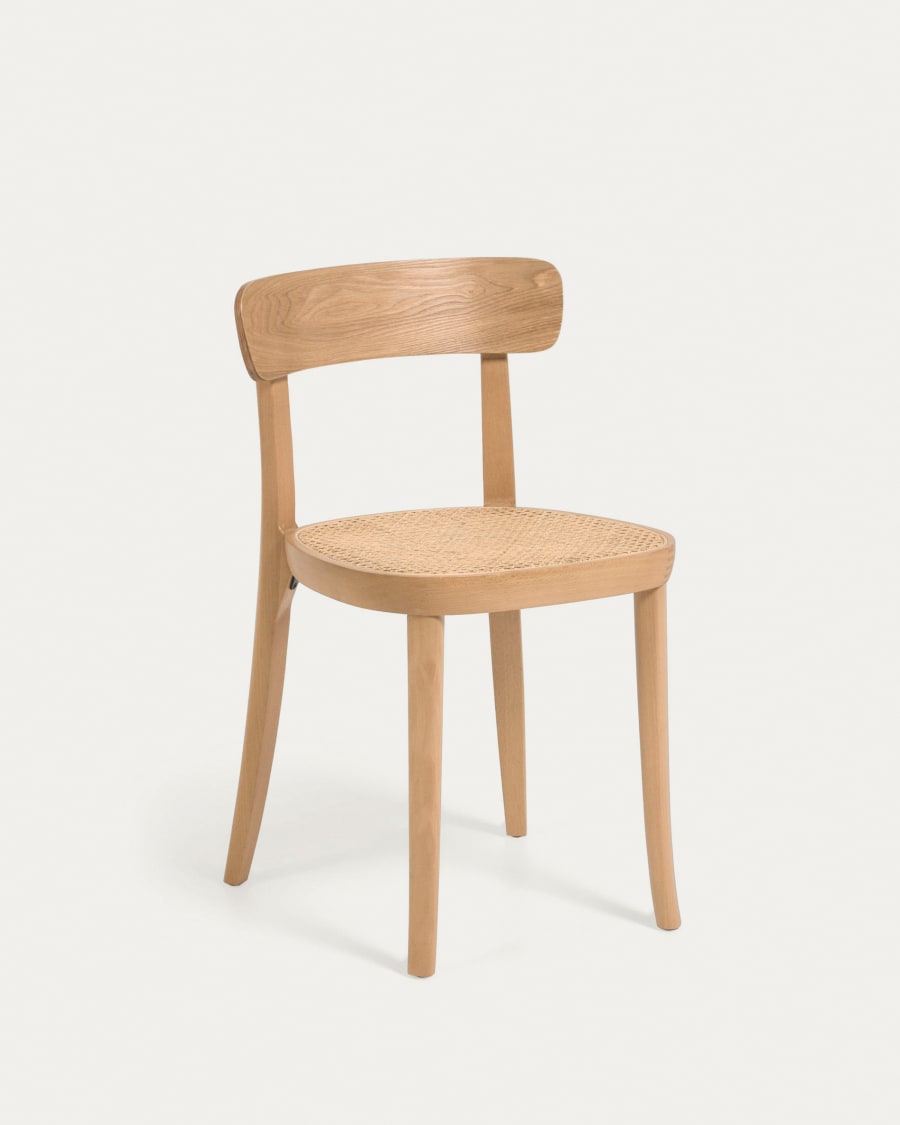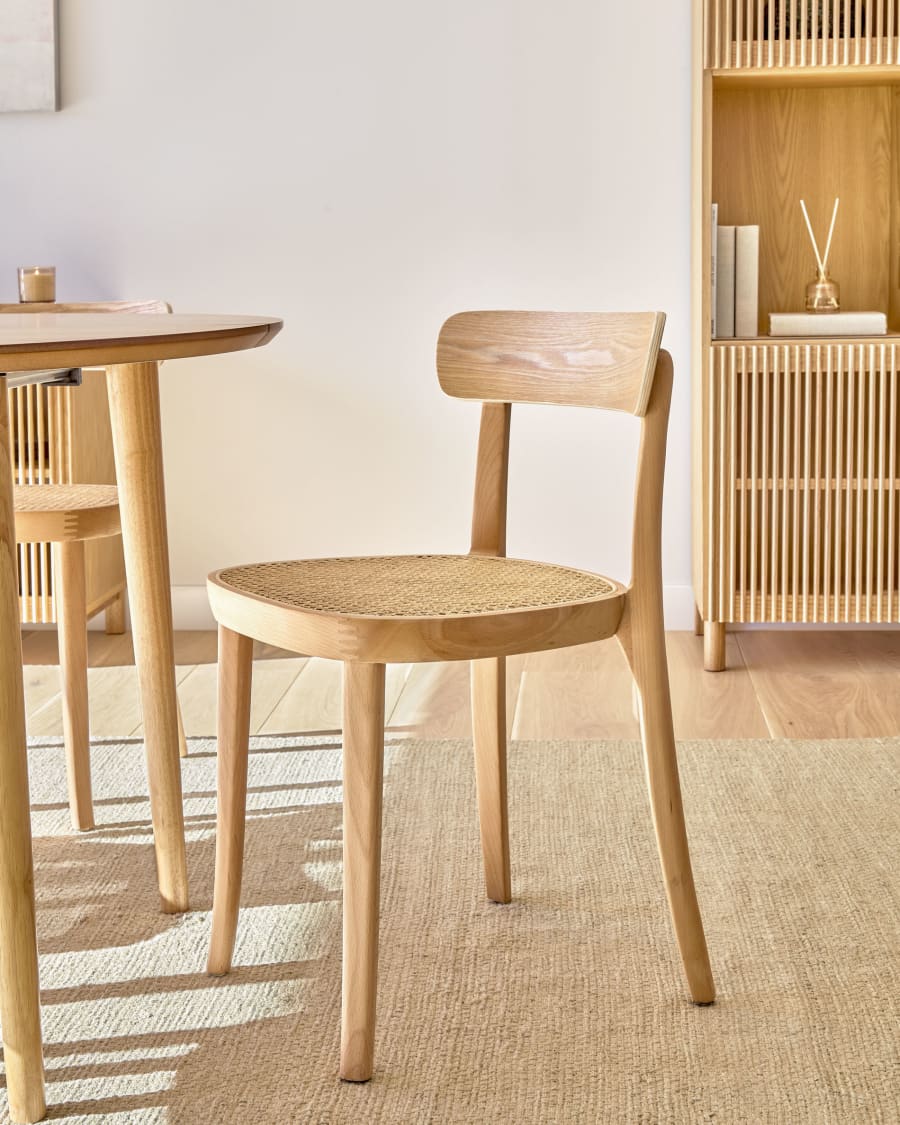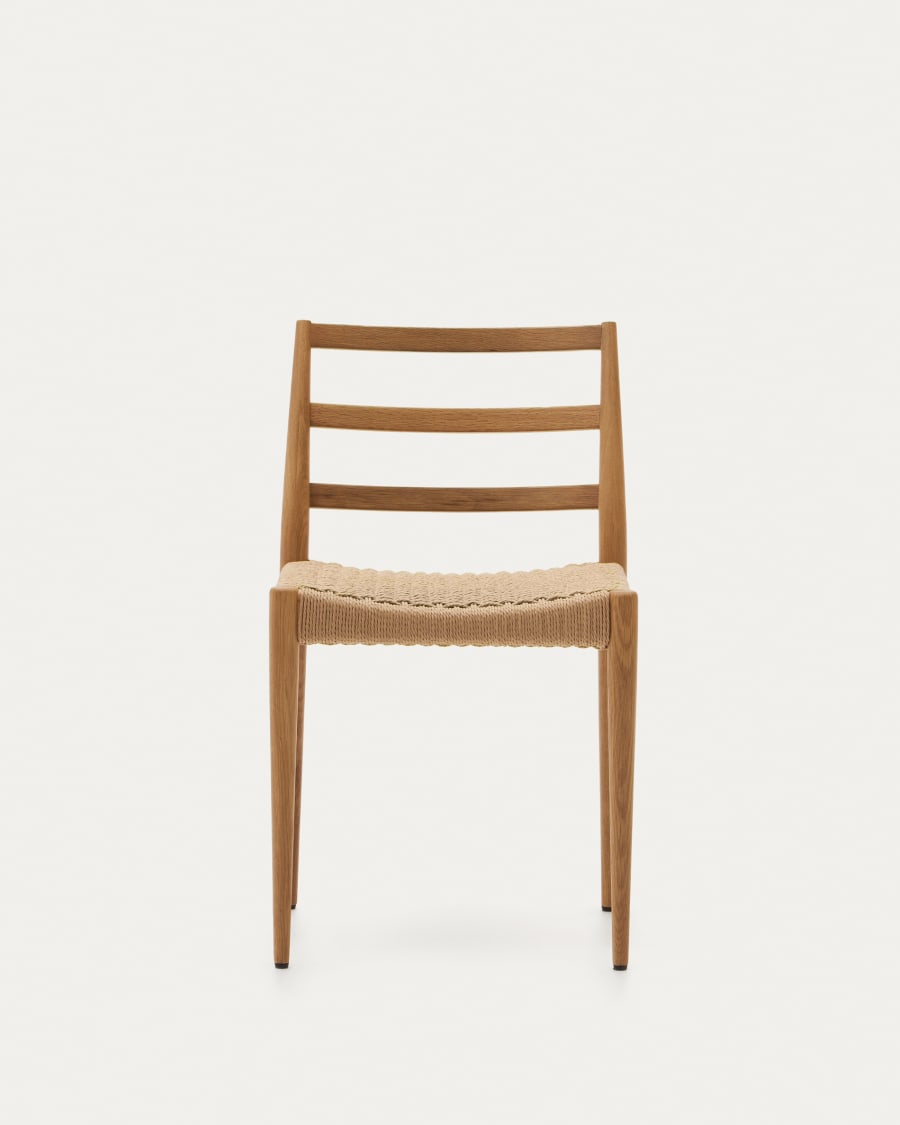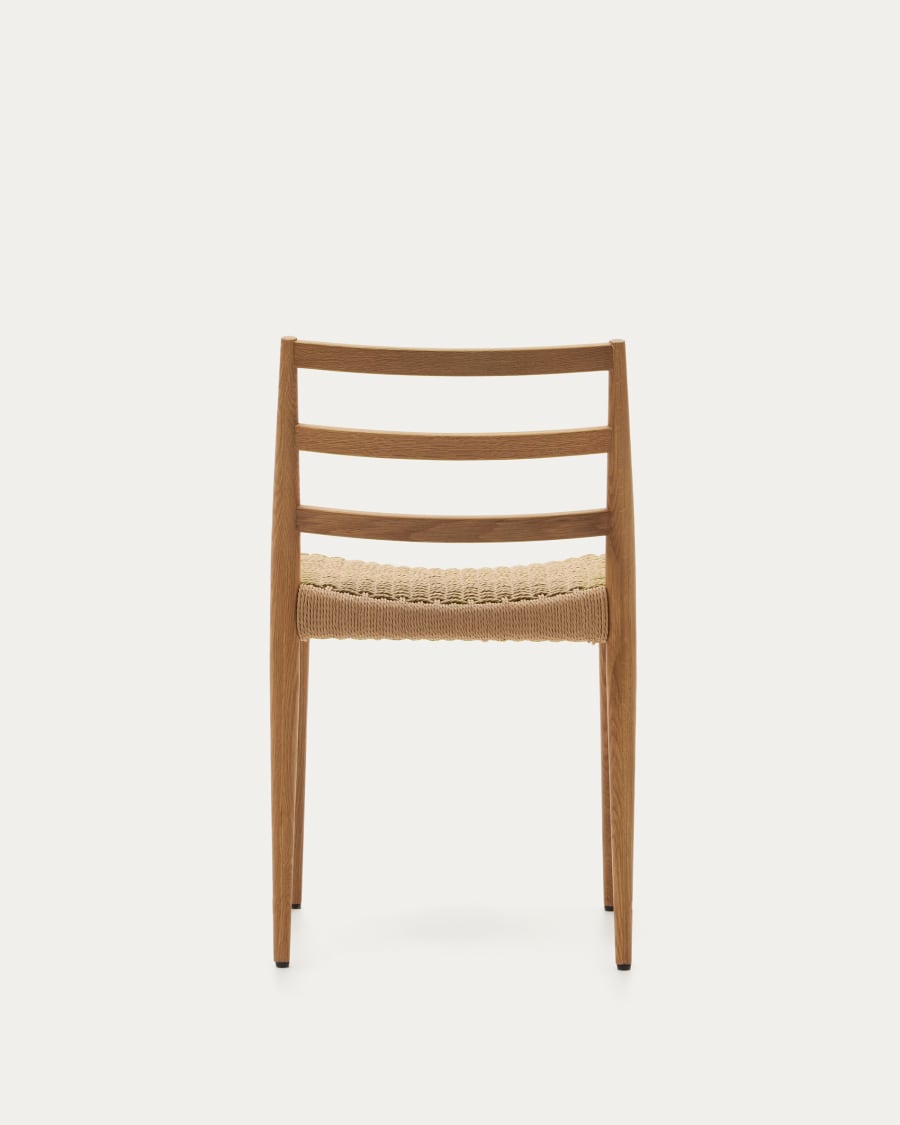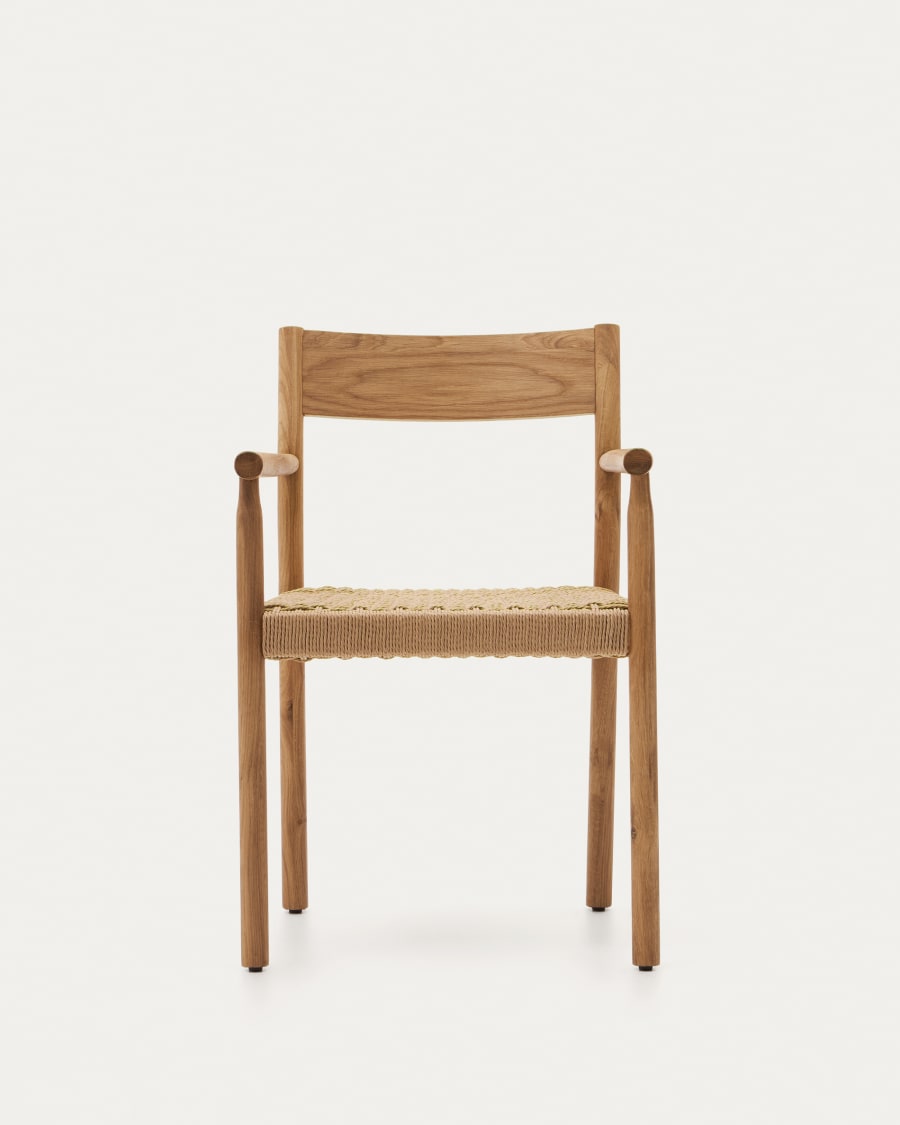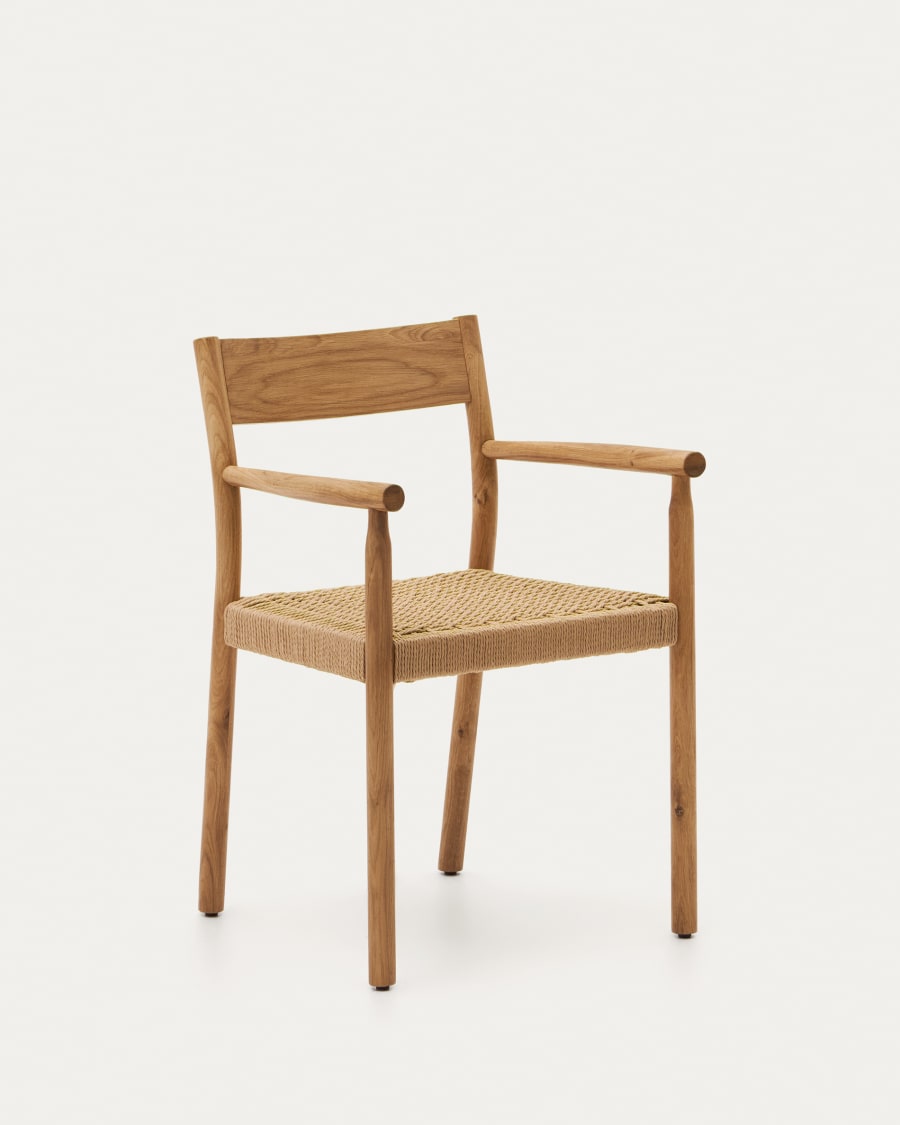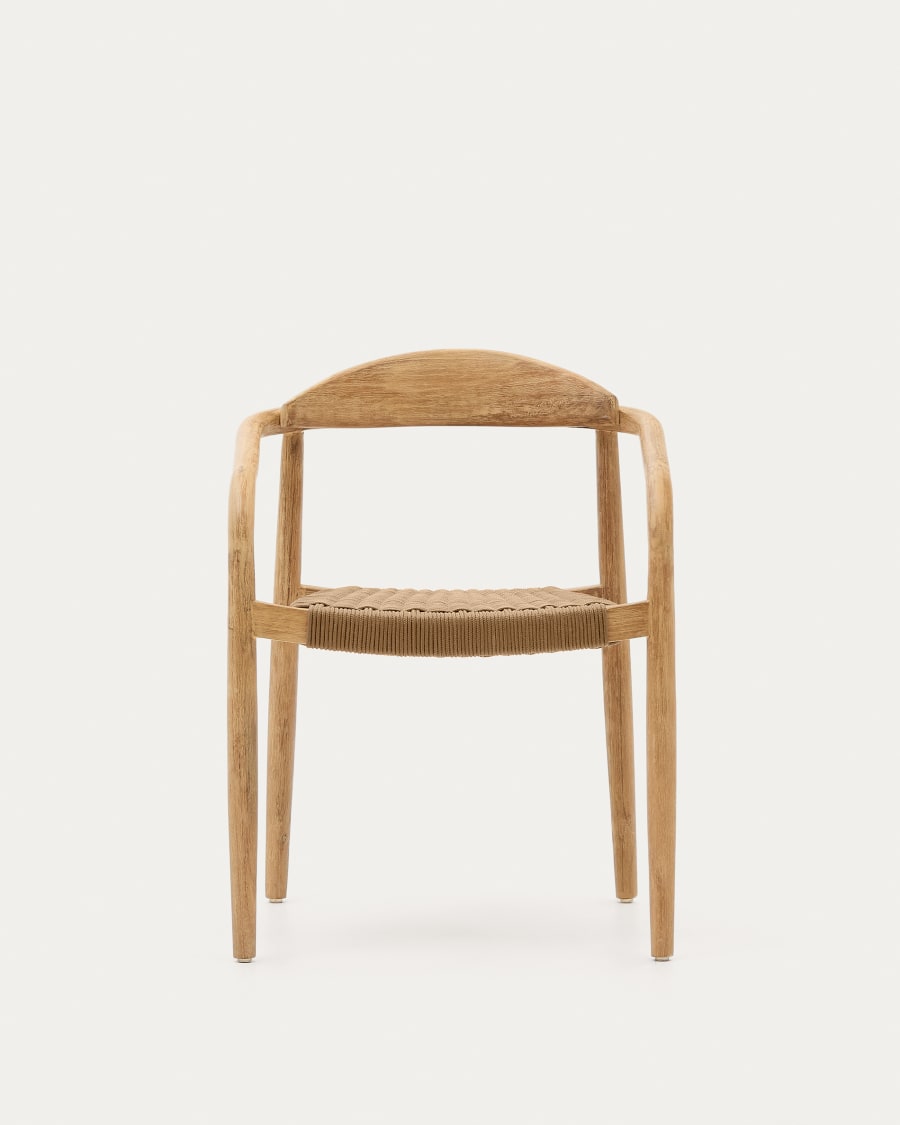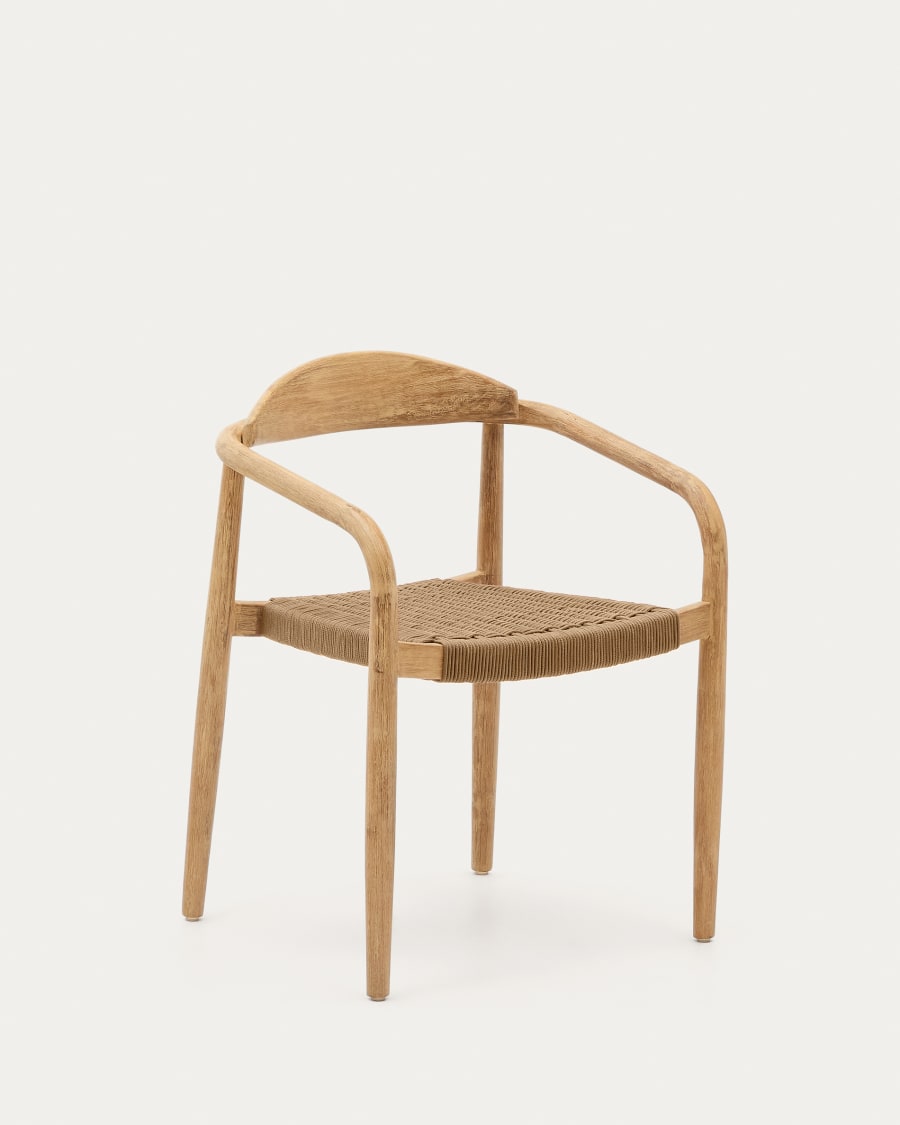- Home
- Japandi Dining Chairs
Japandi Dining Chairs
Japandi Dining Chairs | Timeless Design & Natural Materials
Japandi dining chairs merge Japanese minimalism with Scandinavian functionality, creating timeless pieces that prioritize natural materials and neutral tones.
These chairs balance sleek lines with ergonomic comfort, using wood, rattan, or linen for a serene, clutter-free aesthetic.
Their design philosophy, rooted in simplicity and purpose, ensures each chair serves both form and function without excess ornamentation.
Brands like CondeHouse and Mater emphasize artisanal craftsmanship, offering durable, sustainably sourced options for modern dining spaces.
Design Principles: Natural Materials And Neutral Tones
Natural materials define Japandi dining chairs, with FSC-certified wood, bamboo, and organic cotton dominating construction.
Neutral palettes—whites, beiges, soft grays—create a calming atmosphere, allowing textures and shapes to take center stage.
Wooden frames often highlight grain patterns, celebrating subtle imperfections that align with the Japanese "wabi-sabi" aesthetic.
Textures like looped wool or linen cushions add depth without disrupting the minimalist ethos central to Japandi style.
Sustainability And Craftsmanship
Japandi chairs prioritize eco-conscious materials, such as coffee waste composites or reclaimed wood, reducing environmental impact.
Brands like Mater use Wood Waste Grey or Coffee Waste Black for durable frames, blending innovation with ethical sourcing.
Handcrafted details, from mortise-and-tenon joints to natural rattan weaving, underscore a commitment to quality over mass production.
Many products carry certifications like "Japandi Verified," ensuring longevity and responsible manufacturing practices.
Functional Elegance In Dining Spaces
Japandi chairs enhance dining areas by merging elegance with practicality, featuring stain-resistant fabrics for everyday use.
Ergonomic curves and high-density foam cushions provide support during long meals, balancing comfort with clean Scandinavian lines.
Their timeless appeal avoids fleeting trends, ensuring spaces remain stylish and cohesive for decades.
Lightweight designs, like the WING Side Chair, allow easy rearrangement, adapting to both intimate dinners and larger gatherings.
Pros And Cons Of Japandi Chairs
- Pros: Sustainable materials, neutral tones for versatile decor, artisanal quality, low-maintenance finishes.
- Pros: Ergonomic support via sinuous springs or memory foam, aligning with health-conscious design.
- Cons: Premium pricing due to eco-focused materials and craftsmanship.
- Cons: Neutral palettes may require additional texture or greenery to avoid monotonous interiors.
Why Japandi Stands The Test Of Time
By rejecting synthetic materials, Japandi chairs maintain visual and environmental integrity.
Their focus on "less is more" ensures they adapt to evolving decor trends.
Rugged construction, like stainless steel hardware or reinforced wood, guarantees resilience against daily wear.
Owners avoid frequent replacements, making these chairs a cost-effective investment for functional, serene dining areas.
Elevate your dining room with Japandi chairs that blend minimalist beauty and enduring practicality, crafted for mindful living.
What are Japandi dining chairs?
Japandi design merges Japanese minimalism with Scandinavian functionality, emphasizes sustainability, and creates harmonious spaces. These chairs blend the Japanese principle of wabi-sabi—celebrating imperfection and natural beauty—with the Nordic concept of hygge—prioritizing comfort and cosiness. The result? Pieces that balance sleek, geometric silhouettes with tactile textures, ensuring durability and timeless appeal. Unlike transient trends, Japandi chairs focus on materials and forms that evolve gracefully over time.
Central to their design is a dialogue between contrasting yet complementary philosophies. Japanese influence introduces raw, unpolished wood grains and muted tones that echo nature’s asymmetry, while Scandinavian elements soften these austerity with curved edges and organic textiles. For example, a chair might pair a dark teak frame with a matte-finish linen seat, merging Japanese discipline with Nordic warmth. Japandi Supply House’s “Japandi Verified” standard reinforces this ethos, certifying furniture made from renewable resources and low-waste processes.
Key principles include neutral palettes, natural materials, and intentional craftsmanship. Chairs often feature solid oak, woven rattan, or tactile wool upholstery, avoiding synthetic finishes. The NAGARE Lounge Chair by CondeHouse exemplifies this: its fluid lines mimic natural movements, while sustainably sourced wood ensures longevity. Similarly, Mater’s Conscious Chair 3162 uses coffee waste-based materials, proving sustainability and innovation coexist. These chairs aren’t just functional—they’re statements of mindful living, reducing clutter to highlight quality over quantity.
By uniting organic textures with minimalist structure, Japandi dining chairs transform mealtimes into rituals. They embody a lifestyle where every piece earns its place, fostering calm and connection. Whether through Japandi Supply House’s curated collections or 2Modern’s curated finds, these chairs offer a bridge between cultures and eras, proving true design endures.
How to choose your japandi dining chairs
Consider the materials and craftsmanship
Japandi dining chairs emphasize natural materials like oak, ash, or walnut for durability and timeless appeal. These woods develop rich patinas over time. Rattan, cane, and straw add organic textures, while linen, cotton, or bouclé upholstery softens the look with neutral tones. Brands like CondeHouse and Mater blend these elements into functional designs, such as chairs with repurposed coffee or wood waste, showcasing sustainable innovation. For example, Mater’s Eternity Sidechair uses eco-friendly materials without compromising elegance.
- Solid woods: Oak, ash, and walnut for sturdiness and natural beauty.
- Natural fibers: Rattan, cane, and straw for texture and lightness.
- Upholstery: Natural fabrics like linen, cotton, or bouclé in neutral tones for comfort.
Look for reinforced joints, hand-finished details, and eco-conscious sourcing. Brands like Japandi Supply House prioritize ethical production, ensuring longevity and environmental responsibility. Their collections often feature chairs with organic curves and handcrafted details that highlight the beauty of raw materials.
Match the design and aesthetic to your space
Clean lines and gentle curves define Japandi style. Pair solid wood tables with lighter ash frames and linen seats for contrast. Compact spaces benefit from tapered legs to avoid clutter; large tables suit robust walnut chairs with curved backs for balance. Models like the WING Armchair by CondeHouse adapt seamlessly to dining or lounge areas, blending functionality with minimalist aesthetics. The EIGHT Armchair’s padded upholstery and sculpted silhouette further exemplify this balance.
Stick to neutral palettes like beige or muted gray for calmness. Matte-black frames add modern contrast. Natural wood tones pair well with plants or stone textures. A white oak table with black-framed chairs creates timeless elegance. Japandi Supply House’s collections often showcase these pairings, integrating earthy textures for a cohesive, serene atmosphere.
Prioritize comfort and functionality
Despite minimalist looks, Japandi chairs prioritize ergonomics. Armchairs suit table ends for mealtime support, while side chairs like the WING Side Chair (£1,568) offer flexibility. Curved backs and sloped legs follow body contours for lasting comfort. For busy households, choose stain-resistant linens or molded seats made from eco-friendly materials. The EIGHT Armchair from CondeHouse merges padded support with a streamlined design, ideal for extended use.
These chairs transition effortlessly to home offices or living areas. The Peak Indoor Chair by Cane-line (£630) combines rattan with a sleek silhouette, proving elegance and practicality can coexist in any space. By blending hygge-inspired comfort with Japanese restraint, Japandi chairs become enduring staples in dynamic, multi-functional environments.
Key characteristics of japandi dining chairs
Japandi dining chairs blend Japanese minimalism with Scandinavian functionality through precise design choices. These pieces emphasize natural materials, neutral tones, and clean lines that create spaces balancing serenity with practicality.
Design philosophy
At their core, Japandi chairs embody three principles: simplicity shown through uncluttered forms, intentionality where every curve serves a purpose, and quiet luxury achieved through premium craftsmanship. This hybrid style avoids superfluous decoration while maintaining approachable warmth.
Natural materials
Materiality defines these chairs more than any other element. The table below details how different natural materials contribute to Japandi aesthetics and longevity:
| Material | Key Characteristics | Best For | Care Tips |
|---|---|---|---|
| Light Wood (Oak, Ash) | Bright, airy feel; durable; highlights Scandinavian influence. | Creating a light, minimalist, and spacious dining area. | Wipe with a damp cloth. Avoid harsh chemicals. Use wood-specific cleaners periodically. |
| Dark Wood (Walnut) | Rich, sophisticated look; adds depth and contrast; highlights Japanese influence. | Adding warmth and elegance to neutral-toned rooms. | Dust regularly. Polish with a soft cloth and appropriate wood polish. |
| Rattan & Cane | Lightweight, textural, organic; adds a touch of wabi-sabi imperfection. | Bringing a natural, bohemian touch and visual lightness. | Dust with a soft brush. Clean spills immediately with a damp cloth. Avoid excessive moisture. |
| Natural Fabrics (Linen, Bouclé) | Soft, comfortable, adds texture and warmth (hygge). | Prioritizing comfort for long dinners and adding a cozy feel. | Vacuum regularly with an upholstery attachment. Spot-clean spills according to fabric guidelines. |
Timeless aesthetic
Neutral color palettes dominate Japandi design. While Scandinavian influences favor oak tones and warm beiges, Japanese elements introduce ebony woods and muted greys. This creates spaces where modernity meets tradition, avoiding trends that fade.
Sustainability
Longevity drives material selection. Oak's hardness ensures decades of use, while rattan's renewable nature aligns with eco-conscious values. Brands like Japandi Supply House verify sustainability practices, ensuring materials like coffee-waste composites maintain both aesthetic and environmental integrity.
Integrating Japandi Chairs Into Your Dining Room
Creating a cohesive Japandi dining space starts with pairing chairs with a simple, minimalist table. Natural wood tables, like the Bok Dining Table or Mikado Rectangular Dining Table, complement the organic textures of Japandi chairs. This combination emphasizes clean lines and uncluttered surfaces while celebrating craftsmanship through materials like oak, teak, or sustainably sourced rattan. The result? A harmonious balance of Japanese minimalism and Scandinavian functionality that feels intentional yet inviting.
Accessories should reinforce Japandi’s neutral palette and natural textures. A sculptural pendant light, such as those found in Japandi Supply House’s lighting collection, becomes a focal point without overwhelming the space. Add warmth with ceramic vases in earthy tones or a jute rug underfoot to ground the room. Keep wall art simple—think monochromatic prints or organic shapes—aligning with the style’s “less is more” philosophy. These curated details enhance visual calm while maintaining the room’s functional core.
Mixing chair styles can elevate your dining area without sacrificing cohesion. Use side chairs like the WING Side Chair along most of the table for streamlined seating, then anchor each end with upholstered armchairs for contrast. For a relaxed, communal vibe, incorporate a Bok Bench on one side. This approach, supported by SERP insights, balances symmetry with personality while staying true to Japandi’s emphasis on practicality and serene aesthetics.
- Pair with a simple table: Choose a wooden or minimalist table that complements the chairs' design.
- Use intentional lighting: A single, sculptural pendant light enhances the focal point.
- Choose natural textiles: A simple linen tablecloth or a jute rug can ground the space.
- Keep decor minimal: Focus on a few high-quality items like ceramic vases or simple wall art.
Exploring Types Of Japandi Dining Chairs
Japandi dining chairs merge Japanese minimalism with Scandinavian functionality, emphasizing natural materials and timeless design. Here’s a breakdown of three essential styles to guide your selection.
The Side Chair
Side Chairs offer minimalist versatility. The WING Side Chair showcases a solid wood frame and clean lines, designed to tuck fully under tables. Neutral oak or ash finishes complement neutral tones, while subtle textures in the woodgrain add organic depth without overwhelming room aesthetics.
The Armchair
Armchairs combine ergonomic comfort with bold design. The EIGHT Armchair features sculptural wooden frames paired with textured upholstery like bouclé or leather. Its armrests provide relaxed support, ideal for host seats. The Blend Armchair balances mid-century curves with high-density foam cushions, proving Japandi design merges form, function, and minimalist harmony.
The Bench
Bench seating fosters communal warmth. The HAKAMA Bench uses solid ash wood and rattan accents to maintain visual lightness despite its size. Available in 70-94" lengths, it adapts to various table dimensions while reducing visual clutter. The Copenhagen Bench adds texture through woven leather straps on its wooden base, showcasing craftsmanship and practicality.
- Side Chair: Versatile, armless classic for everyday use and smaller spaces
- Armchair: Enhances comfort and creates a stronger design statement for table ends
- Bench: Communal, minimalist seating that promotes openness
Pricing spans £448 to £4,500, with mid-tier options like the £1,568 WING Side Chair balancing accessibility and quality. Each style embodies Japandi’s "living with less, feeling more" philosophy through intentional, enduring design.
Noteworthy Designers And Collections
Several designers have perfected the Japandi aesthetic, merging Japanese minimalism with Scandinavian functionality. Their work prioritizes natural materials, neutral tones, and enduring craftsmanship. Here are standout creators and their iconic pieces.
Condehouse And The Kamuy Series
CondeHouse, based in Asahikawa’s woodworking hub, collaborates with Naoto Fukasawa on the KAMUY Lounge Chair. This series blends advanced techniques with artisanal skill, using solid Japanese oak for curved seats and precision-crafted frames. Details like varying leg thickness and sculpted angles balance strength and delicacy. Upholstered versions use molded foam for slim profiles and durability. The WING Side Chair (£1,568) features clean lines and matte oak finishes, embodying global simplicity and timeless beauty.
Mater: Sustainable Innovation
Mater champions eco-conscious design with the Eternity Sidechair, priced from £448. It uses recycled coffee and wood waste into durable surfaces, avoiding synthetics. Minimalist shapes and neutral tones ensure longevity, while removable covers simplify care. The collection reflects Mater’s circularity commitment without sacrificing aesthetics.
Cane-line: Natural Woven Elegance
Cane-line’s Peak Indoor Chair uses handwoven rattan for lightweight texture, paired with neutral cushions. Their outdoor Hive Collection blends weather-resistant Cane-line Weave® with teak bases, merging Scandinavian practicality and Japanese simplicity. The Hive chaise lounge (£630) features quick-drying cushions for seamless indoor-outdoor use.
These designers embody Japandi’s core values: sustainability, natural materials, and timeless design. Their work crafts serene yet functional spaces, proving elegance and utility can coexist.
FAQ
What defines the Japandi aesthetic in dining chairs?
Japandi dining chairs merge Japanese minimalism with Scandinavian functionality, creating timeless pieces that emphasize simplicity, natural materials, and serene spaces. Their design features clean lines, organic shapes, and a focus on sustainability, often using light woods like oak or ash, dark woods like walnut, and natural fibers such as rattan or linen. This blend of wabi-sabi's imperfection and hygge's comfort ensures each chair balances elegance with practicality.
What materials are best for Japandi dining chairs?
Authentic Japandi chairs prioritize natural, durable materials. Light woods (oak, ash) offer a bright, airy feel, while dark woods (walnut) add sophistication. Rattan and cane introduce texture, and upholstery in linen, cotton, or bouclé provides warmth. Brands like Mater use eco-conscious options like "Coffee Waste" or "Wood Waste" materials, aligning with the Japandi commitment to sustainability and conscious living.
Do Japandi dining chairs prioritize comfort?
Absolutely. While their sleek design suggests minimalism, Japandi chairs integrate ergonomic principles. Options like upholstered seats (CondeHouse’s KAMUY Lounge Chair) or curved backs ensure support during long meals. Side chairs without arms save space, while armchairs (such as the EIGHT Armchair) offer enhanced comfort. The focus on "hygge" means comfort is never sacrificed for aesthetics.
How can Japandi chairs enhance a modern dining room?
Pair Japandi chairs with a simple wooden table for harmony. Use neutral tones (white, beige, gray) for a calming vibe, and add texture with jute rugs or linen tablecloths. Mix side chairs along the table and bold armchairs at the ends for contrast. Minimal decor—like ceramic vases or woven baskets—complements their understated elegance, creating a clutter-free, welcoming space.
Which brands are known for quality Japandi dining chairs?
CondeHouse, Mater, and Cane-line lead in Japandi design. CondeHouse’s WING Side Chair exemplifies sleek minimalism, while Mater’s Eternity Sidechair uses recycled materials. Cane-line’s Peak Indoor Chair showcases natural rattan craftsmanship. These brands emphasize durability, eco-conscious practices, and timeless appeal, ensuring chairs like the Blend Armchair or NAGARE Lounge Chair become lasting statement pieces.
